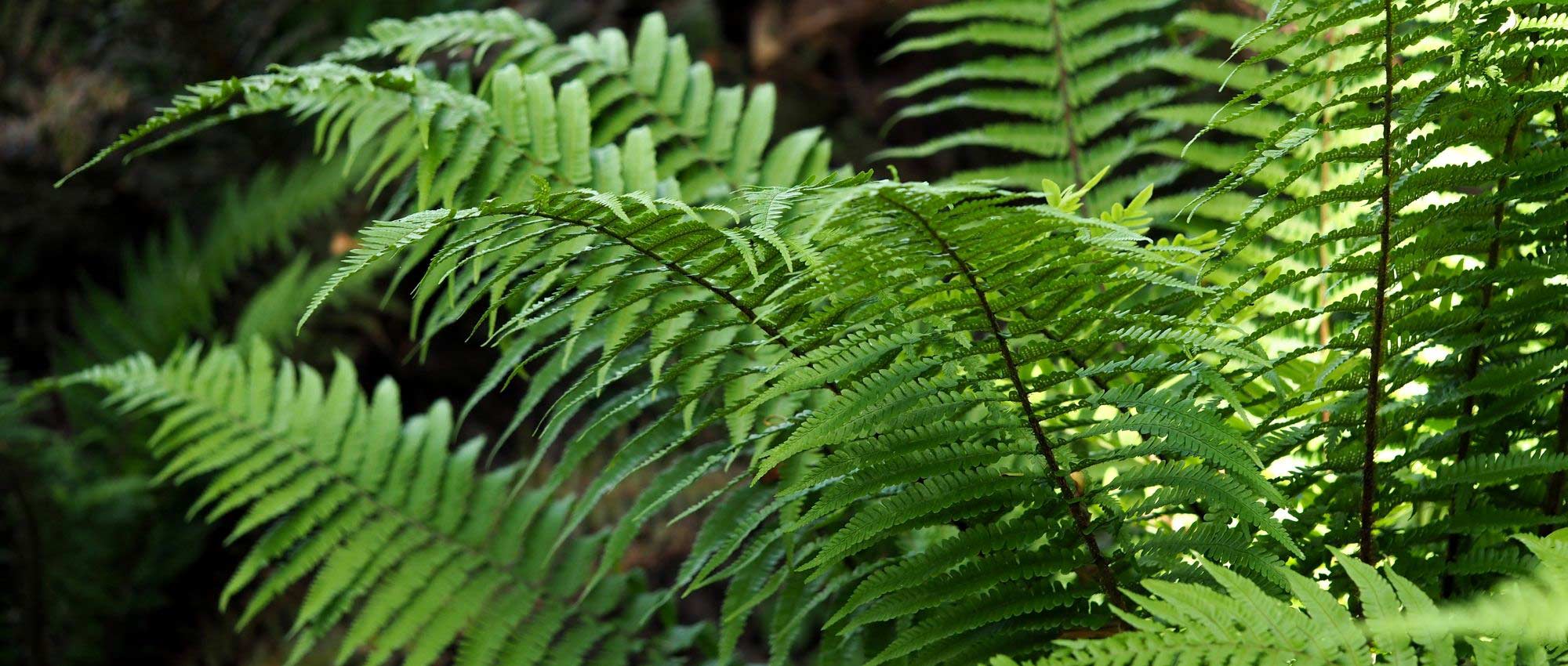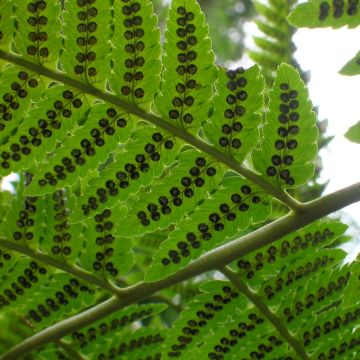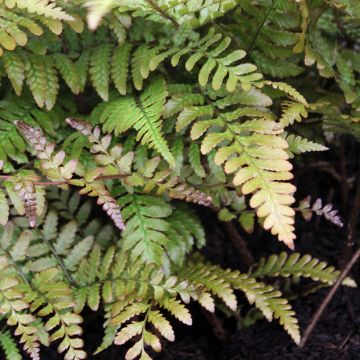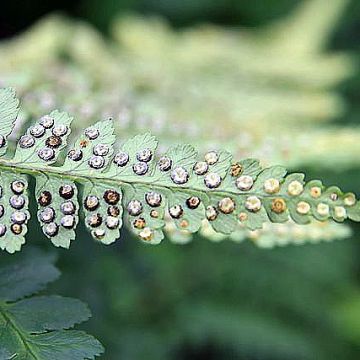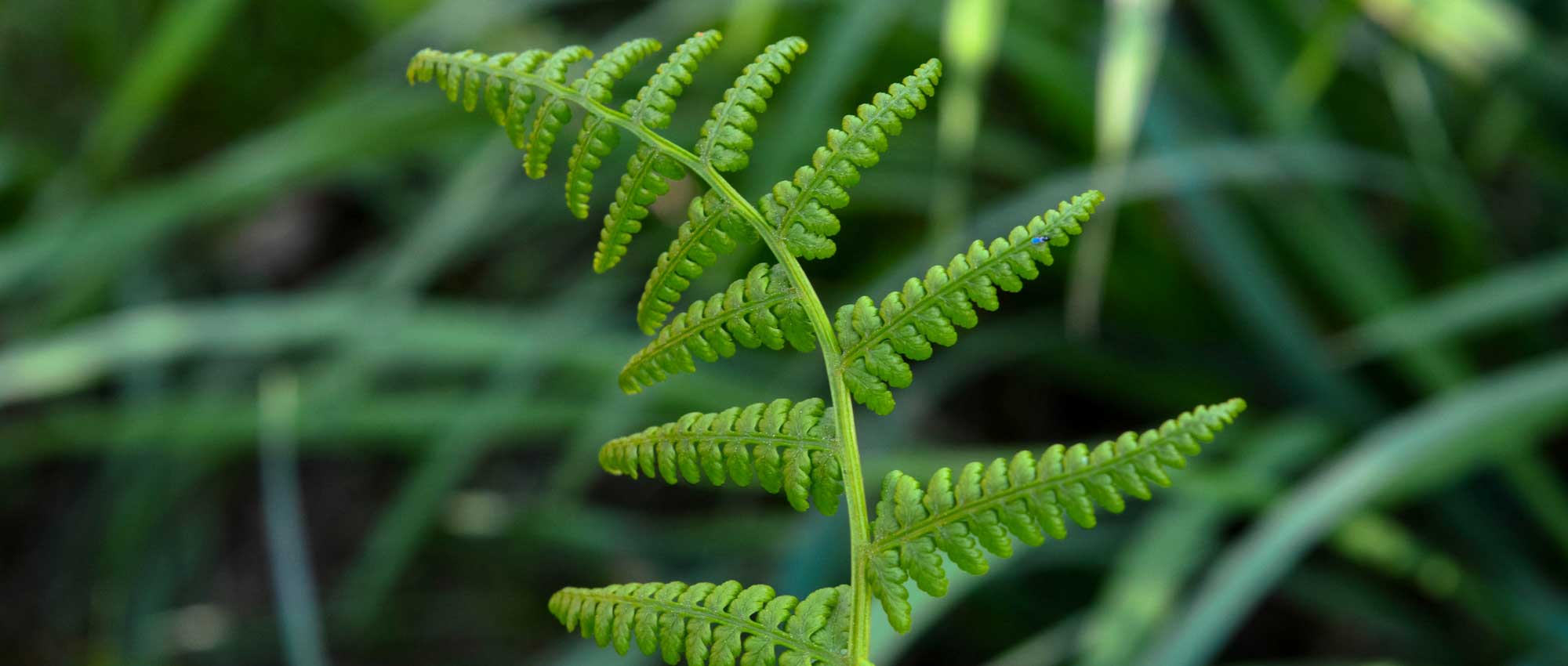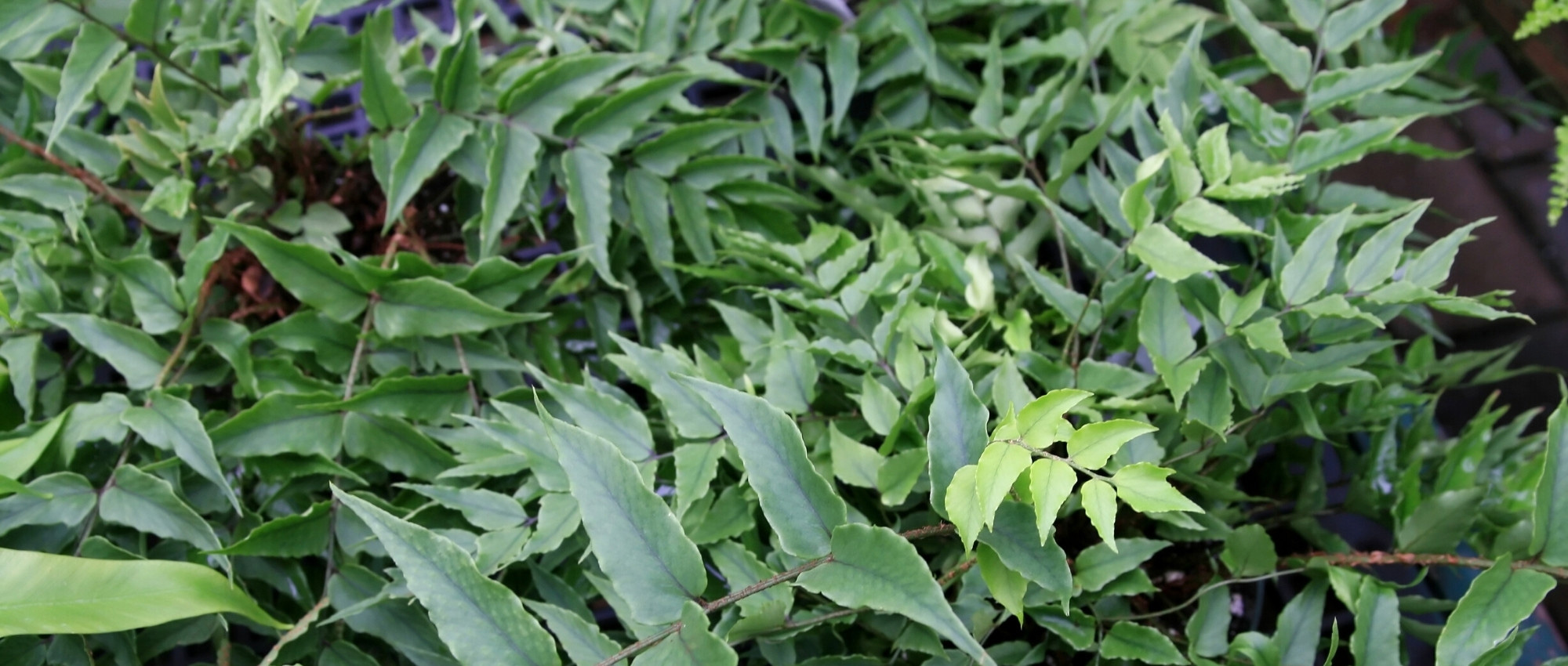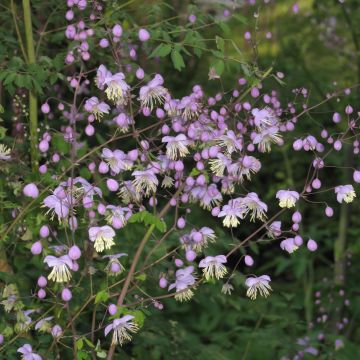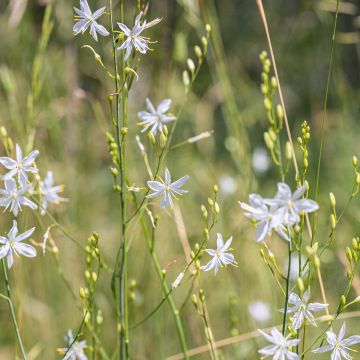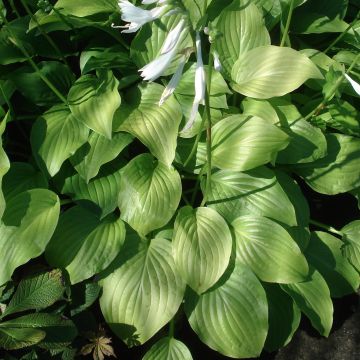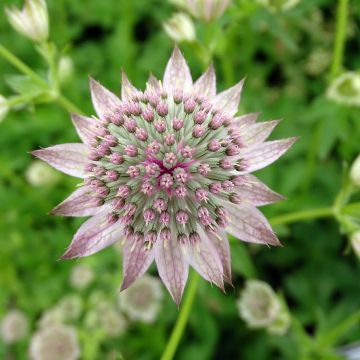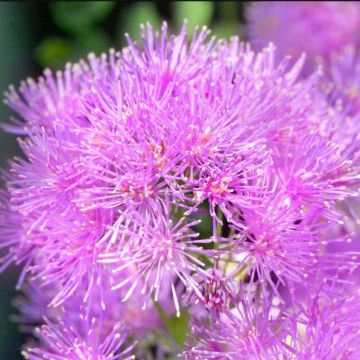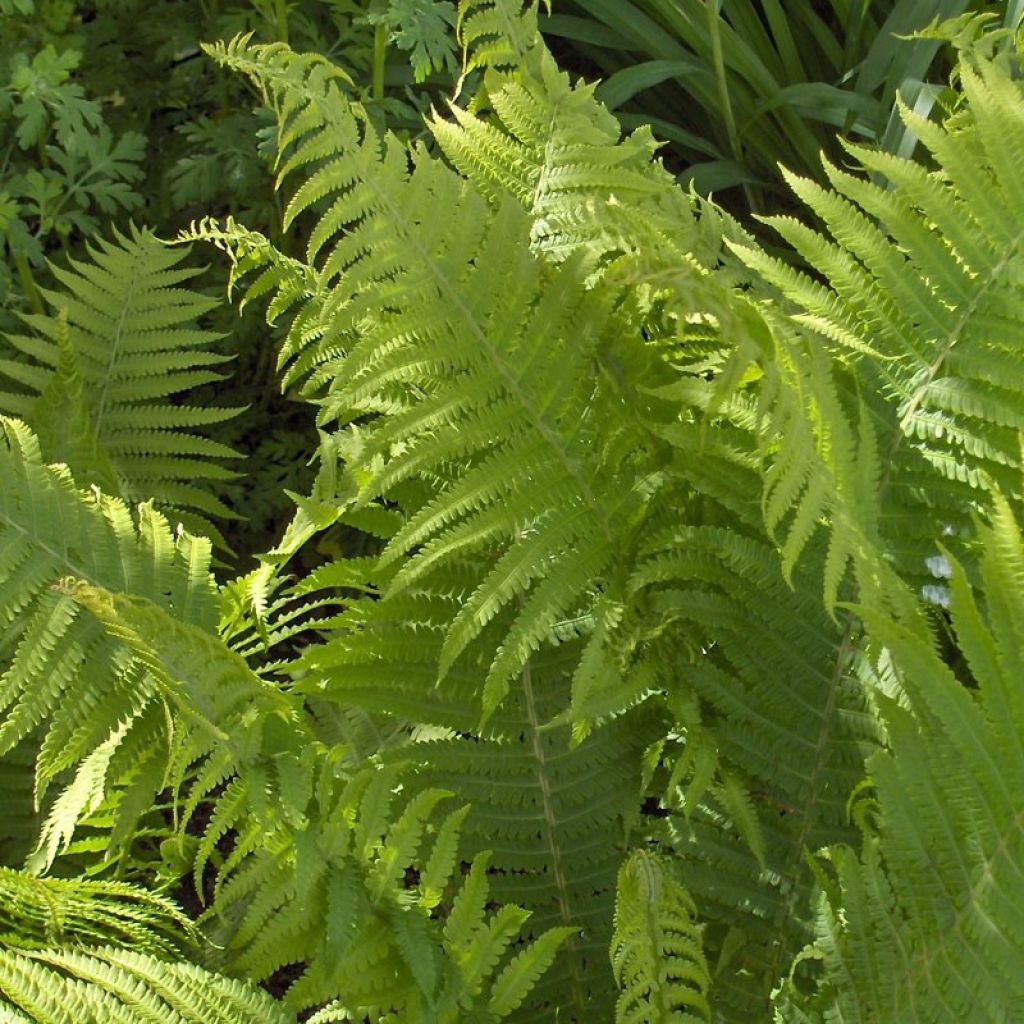

Dryopteris filix-mas - Male Fern


Dryopteris filix-mas - Male Fern


Dryopteris filix-mas - Male Fern
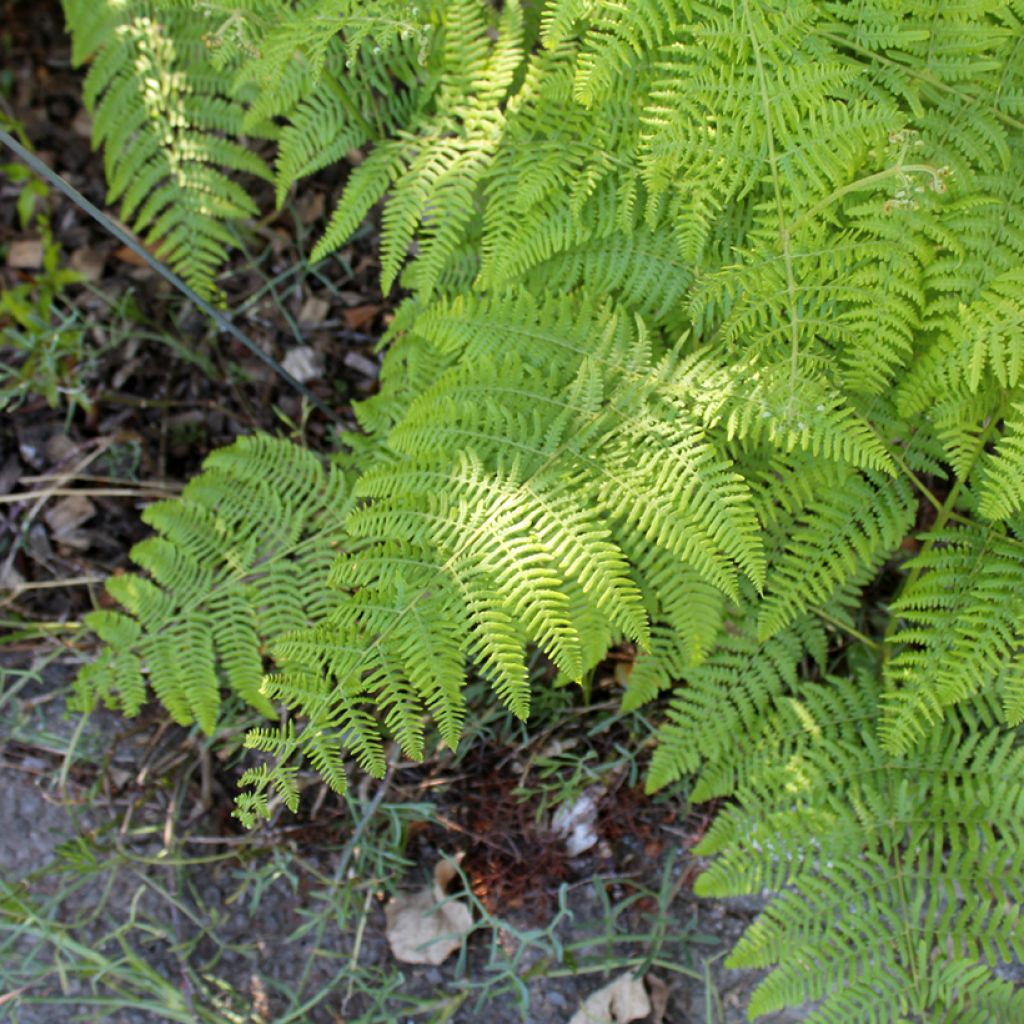

Dryopteris filix-mas - Male Fern
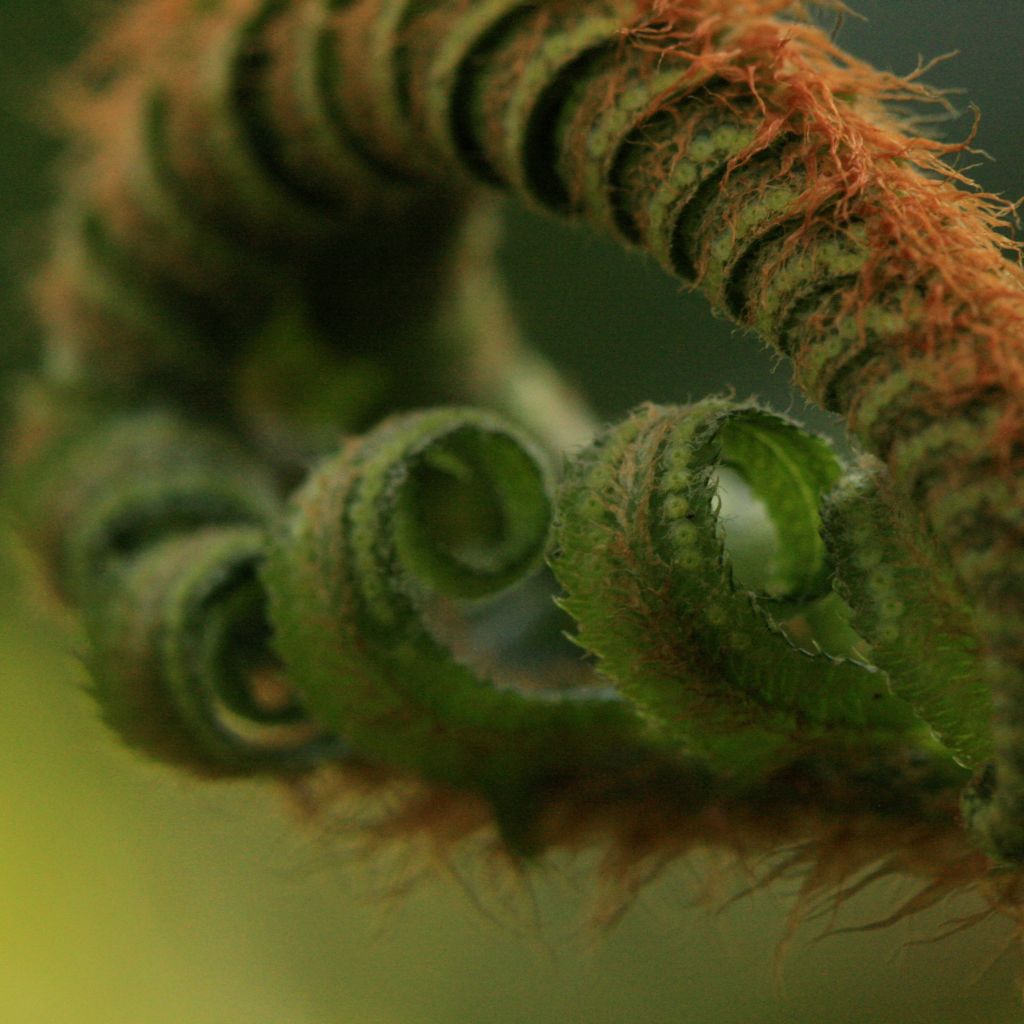

Dryopteris filix-mas - Male Fern
Dryopteris filix-mas - Male Fern
Dryopteris filix-mas
Male fern
Plants ordered early in spring, arrived in good condition and all the young plants have taken root. I chose the species most resistant to drought.
Matthias, 28/08/2025
Special offer!
Receive a €20 voucher for any order over €90 (excluding delivery costs, credit notes, and plastic-free options)!
1- Add your favorite plants to your cart.
2- Once you have reached €90, confirm your order (you can even choose the delivery date!).
3- As soon as your order is shipped, you will receive an email containing your voucher code, valid for 3 months (90 days).
Your voucher is unique and can only be used once, for any order with a minimum value of €20, excluding delivery costs.
Can be combined with other current offers, non-divisible and non-refundable.
Home or relay delivery (depending on size and destination)
Schedule delivery date,
and select date in basket
This plant carries a 12 months recovery warranty
More information
We guarantee the quality of our plants for a full growing cycle, and will replace at our expense any plant that fails to recover under normal climatic and planting conditions.


Would this plant suit my garden?
Set up your Plantfit profile →
Description
Dryopteris filix-mas is the most widespread fern in the world. This botanical species may be less delicate than the female fern, but it is more robust and not lacking in elegance. It forms a very elegant clump composed of a few gracefully arched and beautifully cut pale green fronds. Its diverging habit of growth does not go unnoticed in slightly shady areas of the garden. Choose it without hesitation, in cool climates, if your garden can accommodate its superb volume!
Dryopteris filix-mas, commonly known as the male fern, is a species belonging to the large family of Dryopteridaceae. Widely distributed in Europe, Asia, and North America, this deciduous or semi-evergreen fern lives in cool, moist, and shaded habitats, along hedges, near ditches, and in leafy or coniferous undergrowth and forests. The plant forms a loosely dense clump, 1m (3ft) to 1.20m (4ft) tall and about 80cm (32in) wide. While its growth is quite slow, it spreads over time in large colonies thanks to its creeping rhizomes. It is composed of pale green fronds divided twice into more or less serrated leaflets but always rounded at their tips. The petiole and rachis (central vein) of each frond are covered with reddish scales. The fronds emerge from a thick, scaly stump, from an upright rhizome in a crown shape. The growth is deciduous to semi-evergreen, depending on the severity of the winter.
Dryopteris filix-mas, not demanding in terms of soil type, is very easy to grow in all shady and cool to moist places, but in fertile and well-drained soil. Elegant yet sturdy, it is perfect for slightly neglected areas of the garden, where it will thrive under the trees. It can also be planted not far from a water source, alongside Rodgersia, Solomon's seals, or silver candles. It forms very beautiful massifs in the undergrowth, placed next to Astilbe arendsii 'Burgundy Red', a fern with feathery foliage like Athyrium filix-femina, or blue Himalayan poppies.
Dryopteris filix-mas - Male Fern in pictures
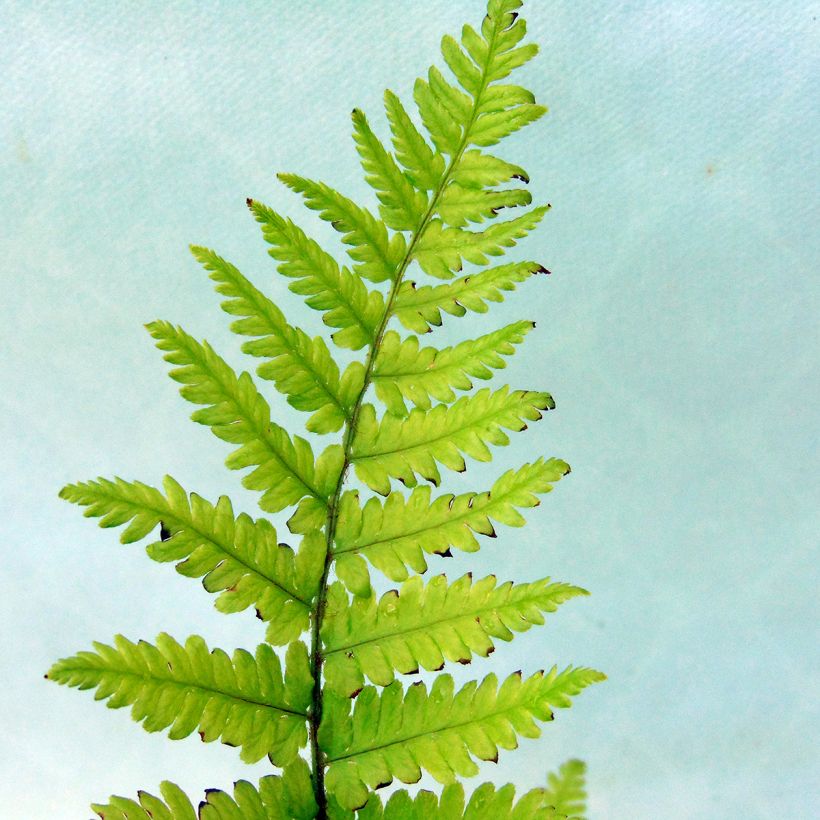

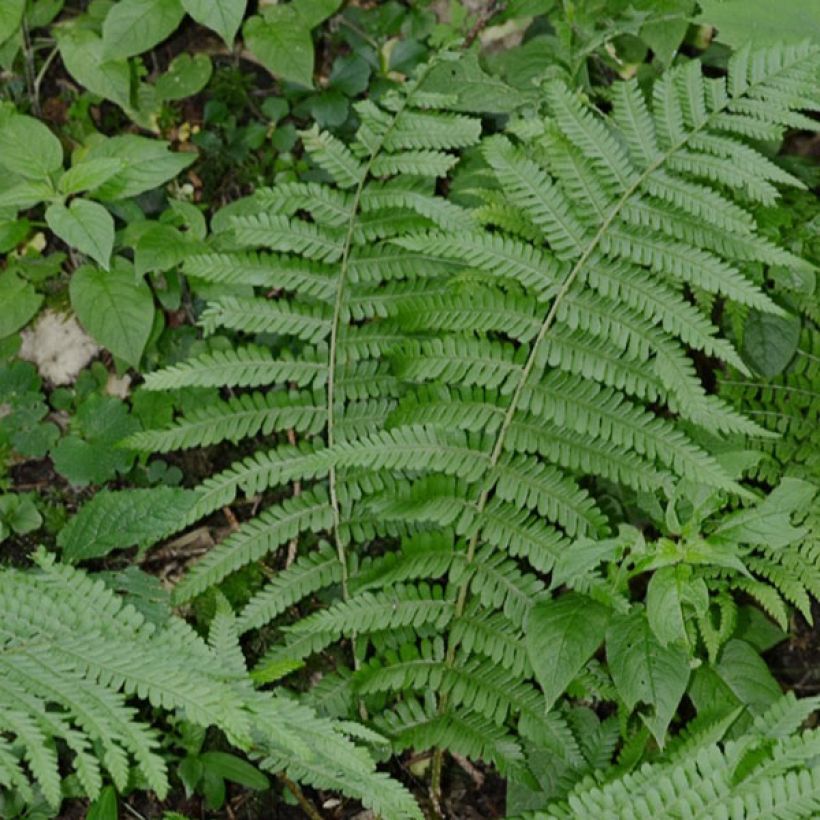

Foliage
Plant habit
Botanical data
Dryopteris
filix-mas
Dryopteridaceae
Male fern
Western Europe
Other Dryopteris
View all →Planting and care
Among the ferns of the temperate zones of the world, the male fern is certainly the most widespread and, it must be said, one of the easiest to cultivate. It can be planted in spring or autumn, in shade or semi-shade, in a light and fertile soil, without drying out too much in summer. This plant is not too demanding on the nature of the soil; it adapts to clayey, loamy, or sandy soil.
Planting period
Intended location
Care
Planting & care advice
-
, onOrder confirmed
Reply from on Promesse de fleurs
Similar products
Haven't found what you were looking for?
Hardiness is the lowest winter temperature a plant can endure without suffering serious damage or even dying. However, hardiness is affected by location (a sheltered area, such as a patio), protection (winter cover) and soil type (hardiness is improved by well-drained soil).

Photo Sharing Terms & Conditions
In order to encourage gardeners to interact and share their experiences, Promesse de fleurs offers various media enabling content to be uploaded onto its Site - in particular via the ‘Photo sharing’ module.
The User agrees to refrain from:
- Posting any content that is illegal, prejudicial, insulting, racist, inciteful to hatred, revisionist, contrary to public decency, that infringes on privacy or on the privacy rights of third parties, in particular the publicity rights of persons and goods, intellectual property rights, or the right to privacy.
- Submitting content on behalf of a third party;
- Impersonate the identity of a third party and/or publish any personal information about a third party;
In general, the User undertakes to refrain from any unethical behaviour.
All Content (in particular text, comments, files, images, photos, videos, creative works, etc.), which may be subject to property or intellectual property rights, image or other private rights, shall remain the property of the User, subject to the limited rights granted by the terms of the licence granted by Promesse de fleurs as stated below. Users are at liberty to publish or not to publish such Content on the Site, notably via the ‘Photo Sharing’ facility, and accept that this Content shall be made public and freely accessible, notably on the Internet.
Users further acknowledge, undertake to have ,and guarantee that they hold all necessary rights and permissions to publish such material on the Site, in particular with regard to the legislation in force pertaining to any privacy, property, intellectual property, image, or contractual rights, or rights of any other nature. By publishing such Content on the Site, Users acknowledge accepting full liability as publishers of the Content within the meaning of the law, and grant Promesse de fleurs, free of charge, an inclusive, worldwide licence for the said Content for the entire duration of its publication, including all reproduction, representation, up/downloading, displaying, performing, transmission, and storage rights.
Users also grant permission for their name to be linked to the Content and accept that this link may not always be made available.
By engaging in posting material, Users consent to their Content becoming automatically accessible on the Internet, in particular on other sites and/or blogs and/or web pages of the Promesse de fleurs site, including in particular social pages and the Promesse de fleurs catalogue.
Users may secure the removal of entrusted content free of charge by issuing a simple request via our contact form.
The flowering period indicated on our website applies to countries and regions located in USDA zone 8 (France, the United Kingdom, Ireland, the Netherlands, etc.)
It will vary according to where you live:
- In zones 9 to 10 (Italy, Spain, Greece, etc.), flowering will occur about 2 to 4 weeks earlier.
- In zones 6 to 7 (Germany, Poland, Slovenia, and lower mountainous regions), flowering will be delayed by 2 to 3 weeks.
- In zone 5 (Central Europe, Scandinavia), blooming will be delayed by 3 to 5 weeks.
In temperate climates, pruning of spring-flowering shrubs (forsythia, spireas, etc.) should be done just after flowering.
Pruning of summer-flowering shrubs (Indian Lilac, Perovskia, etc.) can be done in winter or spring.
In cold regions as well as with frost-sensitive plants, avoid pruning too early when severe frosts may still occur.
The planting period indicated on our website applies to countries and regions located in USDA zone 8 (France, United Kingdom, Ireland, Netherlands).
It will vary according to where you live:
- In Mediterranean zones (Marseille, Madrid, Milan, etc.), autumn and winter are the best planting periods.
- In continental zones (Strasbourg, Munich, Vienna, etc.), delay planting by 2 to 3 weeks in spring and bring it forward by 2 to 4 weeks in autumn.
- In mountainous regions (the Alps, Pyrenees, Carpathians, etc.), it is best to plant in late spring (May-June) or late summer (August-September).
The harvesting period indicated on our website applies to countries and regions in USDA zone 8 (France, England, Ireland, the Netherlands).
In colder areas (Scandinavia, Poland, Austria...) fruit and vegetable harvests are likely to be delayed by 3-4 weeks.
In warmer areas (Italy, Spain, Greece, etc.), harvesting will probably take place earlier, depending on weather conditions.
The sowing periods indicated on our website apply to countries and regions within USDA Zone 8 (France, UK, Ireland, Netherlands).
In colder areas (Scandinavia, Poland, Austria...), delay any outdoor sowing by 3-4 weeks, or sow under glass.
In warmer climes (Italy, Spain, Greece, etc.), bring outdoor sowing forward by a few weeks.






























